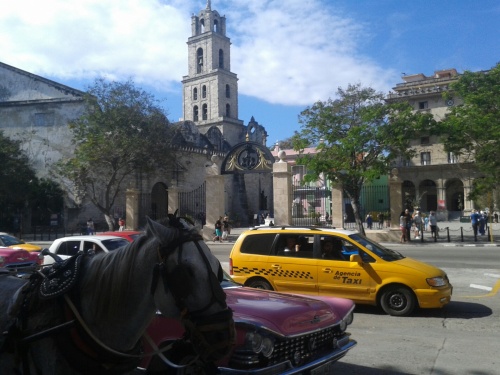 Empress of the Seas anchored at Havana’s Port two days as we did bus and walking tours. I increasingly gained respect for the Cuban people as sequenced history revealed their tumultuous past. Consider:
Empress of the Seas anchored at Havana’s Port two days as we did bus and walking tours. I increasingly gained respect for the Cuban people as sequenced history revealed their tumultuous past. Consider:
1522: first African slaves, 1555: piracy age begins
1607: Havana becomes capital, port for Mexican/Peruvian silver trade
1741: British Admiral Vernon captured Cuba; yellow fever ends British war
1762: British occupy until exchanged for FL in 1763, Anglo-Spanish 7 years’ war
1791: French fled Haiti rebellion, coffee established
1808: Jefferson begins U.S. interest in Cuba
1868: 10-year war against Spain, 1896 Maceo killed
1886: Cuba abolishes slavery; 1892: Jose Marti, dies a martyr
1896: General Maceo killed during Spanish-US War; U.S. occupies Cuba 1898
1920: Sugar makes fortunes
1925: Gen. Machado establishes public works program, becomes a despot
1933: Batista revolt; 1952: bloodless coup; 1953; Castro leads rebels; 1955-59 Che Guerera’s revolt; 1958: Bautista “El Hombre” leads 3 decades; 1959: Castro welcomed
1960: Castro (PM 1959-1976) sells sugar to Russians
1961: U. Bay of Pigs Invasion; 1962: Soviet Union installs missiles
1967: Guerera killed in Bolivia; 1968: 58,000 small businesses reformed; 1970: sugar declines to a stop, 2002; Castro president, 1976-2008
1976: Cuban jet attacked by terrorists, 75 killed; by 1980: 125,000 fled to U.S.
1988: Cuban forces in Angola; 1991: Castro’s “Time of Peace”; Soviet collapse
1996: Cuba shoots Miami”s Brothers’ rescue plane
2003: Bush restricts travel; 2006 Raul replaces Fidel; 2009: Obama lifts visit restrictions
2008: Raul Castro re-elected, licenses 175 private businesses in 2011
2014: Obama est. diplomatic ties and telecommunications, aid to Cuba
2016: Trump declares no Cuban terrain travel; Fidel Castro dies  Much more to follow these neighbors to the southeast of the U.S. Are we learning from our past? They appear to be doing so from theirs.
Much more to follow these neighbors to the southeast of the U.S. Are we learning from our past? They appear to be doing so from theirs.
Walking past a horse-drawn buggy, a shiny vintage cab, and a new checkered cab van in Cienfuegos, the Pearl of the Caribbean, the centuries of revolt came alive beneath the watchful gaze of Jose Marti’s statue. I could almost hear the strains of “Guantanemero” with Marti’s poetry inflaming hearts between the well-known verses. I could easily “come back to Guantanemero”–or Cienfuego–or Cuba’s soil.
















